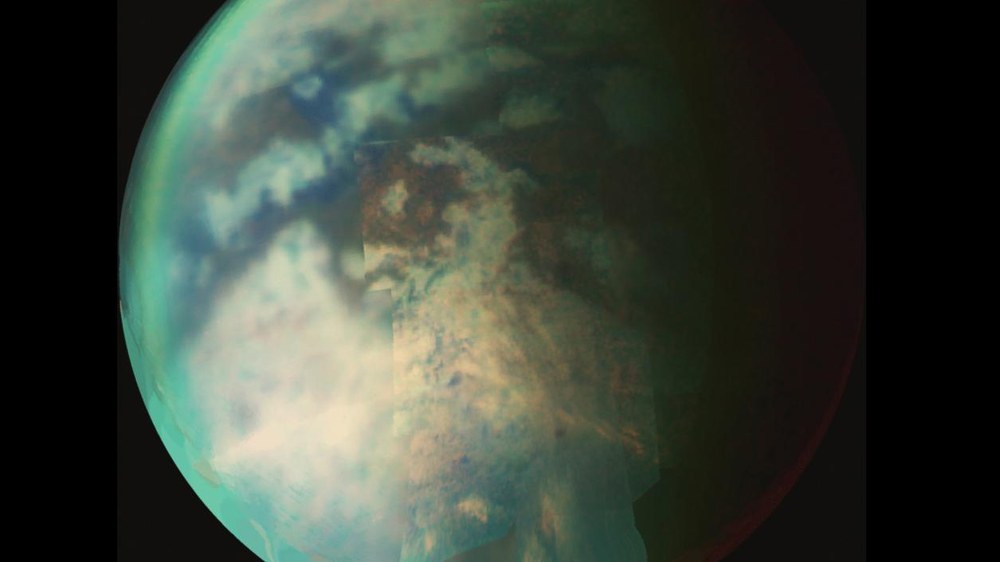Titan: moon with an atmosphere

First discovered in 1655 by the Dutch astronomer Christiaan Huygens, Titan is the largest of the 82 moons of Saturn we have identified. With a diameter of 5150 kilometres, Titan is the second largest moon in the entire Solar System, second only to Jupiter's moon Ganymede with a diameter of 5262 kilometres.
Titan is the only moon in the Solar System to have an atmosphere, making it a particularly interesting and intriguing research prospect for scientists. As this atmosphere has an aerosol layer (a layer of tiny, brown, suspended particles of hydrocarbons called tholins) at a height of 200 to 300 kilometres and a high proportion of methane in its predominantly nitrogen atmosphere, it is impenetrable to telescopes and cameras relying on visible light. In over 40 flybys of Titan, the Cassini-Huygens spacecraft managed to 'see' the surface of the moon with its radar experiment and an infrared camera. By the end of the mission, the Cassini orbiter had completed a total of 127 flybys of Titan at various distances. These flybys were used to acquire data which were used for intensive research of the icy moon, but also enabled the spacecraft to change its trajectory using the moon’s gravity instead of fuel.
To researchers, this Saturnian moon is like a trip back in time to our planet's past that could provide a glimpse of Earth's primitive atmosphere. Titan and Earth are the only bodies in our Solar System whose atmospheres are composed principally of nitrogen. In the case of Titan, the proportion of nitrogen is 95 percent by volume, greater than that of our own atmosphere here on Earth (71 percent). Scientists believe that the atmosphere of Titan might be similar to Earth's early atmosphere. By exploring Titan, they hope to find clues about how the young Earth developed into a planet on which life could form.
A cold, dark world
Titan and its planet, Saturn, orbit at a distance of approximately 1400 million kilometres from the Sun. The natural satellite orbits Saturn at a distance of about 1.2 million kilometres, slightly more than three times the distance between Earth and the Moon. This vast distance from the Sun, combined with its diffuse, nebulous atmosphere, mean that a person on Titan would have to make do with daylight only roughly one thousandth as strong as we have on Earth. For this reason, solar radiation does little to warm up Titan and chemical reactions therefore take place much slower than on Earth. The average surface temperature is minus 179 degrees Celsius. It is possible that Titan could have preserved many of the chemical components that preceded the formation of life on Earth by deep-freezing them. It is very likely that this Saturnian moon has a 'fluid cycle' like we do on Earth with clouds, rain, rivers and oceans, but with ethane (C2H6) and methane (CH4) taking the place of water. In 2009, DLR scientists used data acquired by the VIMS spectrometer on Cassini to discover a lake reflecting sunlight near Titan's north pole.
A highlight of the Cassini-Huygens mission was the descent of ESA's Huygens lander through Titan’s atmosphere and its landing on the surface of the mysterious moon on 14 January 2005.
